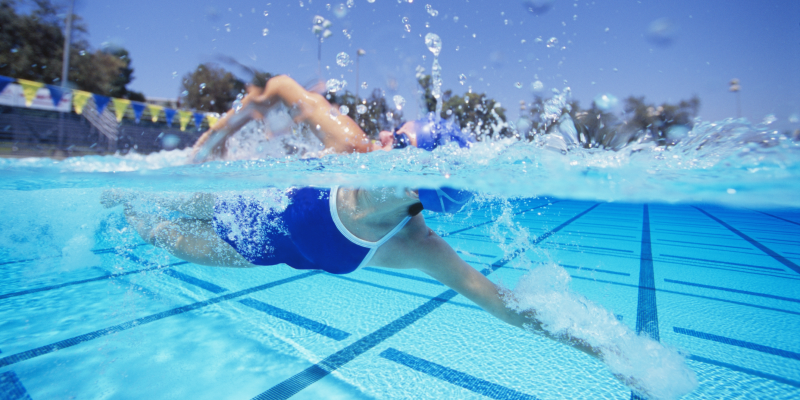
Swimming is a great form of exercise that can be very beneficial to a person’s overall health. Who doesn’t love a good dip in the pool, right? On the flip side, swimming can also present a number of respiratory issues and cause breathing dysfunction. It’s important to know the respiratory risks of swimming before hopping in the pool.
The swimmer’s environment
When thinking of indoor pools, a plethora of things come to mind. Most indoor pools have similar qualities: it’s hot, it’s humid and it smells like chemicals. Typically, swimming pools use chlorine as the main chemical to keep the pool clean. The combination of chlorine, other chemicals and undesirable waste from humans can have a negative effect on swimmers and their respiratory health – especially in poorly ventilated areas.
Legionella infections
According to the Centers for Disease Control, swimmers sometimes find themselves with legionella infections due to breathing in small droplets of water from public pools that contain harmful germs. Legionella can lead to a severe type of pneumonia called Legionnaires’ disease.
Respiratory stridor
Even the world’s greatest swimmers can suffer from a multitude of breathing issues and poor respiratory health. According to the Aspetar Sports Medicine Journal, swimmers often complain about post-exertion coughing after tough matchs. Some swimmers report experiencing issues with sore throats and coarse, raspy voices after long periods in the water. This can result in wheezing or shortness of breath during training. These common symptoms fall under an umbrella term – respiratory stridor. Research confirms that 72% of swimmers have reported stridor symptoms including a runny nose, sneezing, itching and obstruction or congestion. Doctors often diagnose swimmers with stridor after looking into their biometrics and breathing patterns.
Gastroesophageal reflux
Another element found to affect respiratory stridor is gastroesophageal reflux disease, which is caused by constantly having one’s head under water, paired with the consumption of acidic ingredients in popular sports drinks. This reflux can irritate the throat and act as a catalyst for various respiratory issues.
Breathing patterns in swimmers
The Aspetar Sports Medicine Journal states that swimmers are known for having unusual breathing patterns in comparison with other athletes in opposing sports. This is because swimmers are constantly breathing out against the pressure of the water, primarily through the nose. This action can lead to air trapping and hyperexpansion of the swimmer’s lungs, a pattern known as “trickle breathing.”
Increasing swimmers’ lung health
Overall, the health benefits from swimming are plentiful, but chronic practice of the sport comes with a cost. Swimming can sometimes reduce the risk of developing asthma by increasing lung capacity over time, but this can only happen when respiratory health is prioritized. When symptoms of common respiratory issues are identified, swimmers should immediately contact their doctors and seek additional help to resolve these problems before they become worse.














